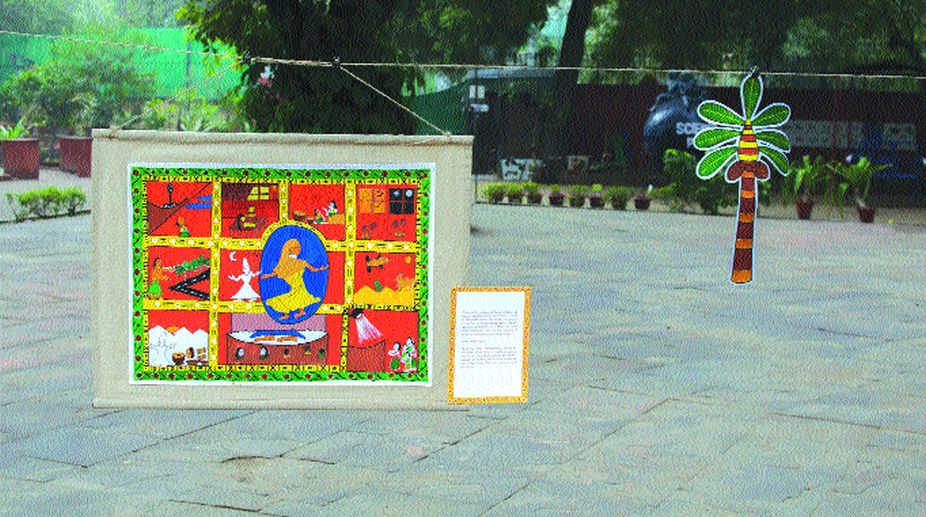Despite the fact that the advent of technology is a blessing for us, somewhere down the line it has been one of the major reasons for the depletion of various beautiful art forms. One of the famous dying art forms is Cheriyal scroll painting, which had to bear the brunt of the evolution of media. The scroll painting has a rich history and it is an evolved version of Nakashi art that usually contains bright hues with a predominance of red in the background.
Rich with local motifs and bright colours, this scroll painting is practised in Cheriyal village in Warangal district of Telangana. In this fine art form, the scrolls are painted in a narrative form to depict stories from the age-old epics and mythological tales. However, with the changing times, Cheriyal scroll painting is also used to deliver social messages. The elaborate designs, dazzling colours and magnificent brushwork are the highlights of this dwindling art form which, unfortunately, only three families are struggling to carry forward.
Happy Hands Foundation, committed towards revival of and preservation of traditional and folk arts, has collaborated with 10 youth educators and other children from NGOs and government schools, to present for the first time, a narrative exhibition on Cheriyal Scroll Art. All the youth educators apprenticed intensely under D Vinay, who is a third generation Cheriyal artist. In fact, there are only three families in India now who practise this brilliant art.
Advertisement
Speaking at the pre-exhibition art showcases in the Capital, Medhavi, founder of Happy Hands Foundation, said, "Cheriyal scroll painting is one of the narrative arts of India. Every year we choose an art form and try to create awareness about it. We have 10 youth educators, who train beginners in a very intensive way. Together they make different stories and experiment with different narrative formats. The educators also teach at under-resourced schools and government schools. For this event, we have partnered with Teach For India (TFI). Art is for everyone and through a series of showcases in public areas, we hope to reach out to as many people and enable them to experience this art, before the final exhibition at India Habitat Centre in March."
Taking the family's culturally-rich legacy forward, Vinay continues to paint and create awareness about this art form. Having done Bachelors in Fine Arts from Jawahar Lal Nehru Fine Arts University in Hyderabad, he confidently walks in his father's footsteps. He said, "I started painting when I was eight. This narrative art form began in the 13th century, when these were used to decorate walls. However, from 16th century onwards it transcended from walls to cloth."
By and large, said Vinay, Cheriyal scroll paintings were made to depict mythological tales. "Although, initially, we started to paint the stories of various communities of our village, such as weavers, farmers, cobblers and fishermen. Gradually the work started getting more recognition."
Cheriyal scroll paintings bear resemblance to Madhubani paintings of Madhya Pradesh, albeit it is brighter and involves lots of minute detailing. The scroll can be up to 30 to 60 feet in length and it is possible that one scroll can have more than 60 panels, depending on the story.
Vinay explained, "It takes approximately six months to a year to prepare one scroll. The conventional scroll is usually vertical that has series of horizontal panels. My father, D Vaikuntam, is a master craftsman and a National Awardee, who is striving to keep this art form alive." The young artist explained that, now with changing times, Cheriyal scroll painting is not only used to narrate stories but also to embellish walls. One scene from any story is picked up to create the scroll, as per people's demands. This could take somewhere from one week to 10 days, he said. "The state government has also been quite helpful to promote this traditional art form," Vinay informed.
Advertisement










